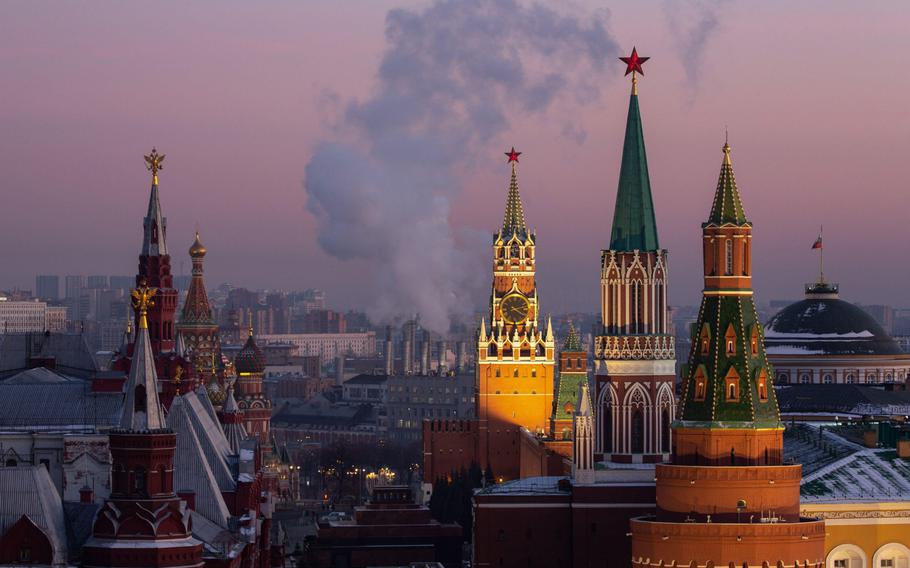
The Kremlin in Moscow on Dec. 11, 2020. (Andrey Rudakov/Bloomberg)
The ruble is fast losing its allure as emerging-market investors’ favorite currency amid Russia’s intensifying tensions with the West and stubborn inflation.
The currency has made the worst start to the year among emerging-market peers on renewed concern Russia may invade Ukraine, almost eight years after annexing Crimea. Diplomatic overtures have failed so far, prompting Morgan Stanley, Goldman Sachs and Deutsche Bank to flag risks including sanctions and a surge in inflation.
The reversal halts the ruble’s run as the best-performing currency in emerging markets last year through mid-November, before geopolitics flared up. It’s also undoing the goodwill investors have showered on Russia on the back of the central bank’s proactive rate hikes. With data for early January showing a resurgence in consumer prices, investors now have little incentive to go back to the overcrowded trade.
“In the current situation, we expect investor interest to be low and risk premia to increase gradually as ruble underperforms other high-yielders,” Morgan Stanley analysts including Alina Slyusarchuk and James Lord wrote in a report, as they assessed multiple scenarios on how the dispute could play out. “Without any assumptions around dollar movements, we think that ruble can approach the 78-79 level.”
The cost of hedging against losses in the Russian currency rose Monday to the highest since April 2020, according to one-month risk reversals. Traders’ nervousness then had been driven by oil prices tumbling to an 18-year low. But now, while Brent crude has rebounded to near a seven-year high, the ruble is unable to benefit because of deteriorating macro conditions.
Risk reversals, the premium of options to sell the currency over those to buy it, are headed for a fourth month of increases, the longest streak since the 2014 war in Crimea.
One-month implied volatility on the currency jumped Monday to the most since November 2020. Meanwhile, investors have slashed their long ruble positions by more than half over the past two months to 9,617 contracts as of Jan. 11, according to CFTC data.
“It may be some time before investors will again feel comfortable putting fresh capital into ruble longs,” Goldman strategists including Zach Pandl and Kamakshya Trivedi wrote in a note.